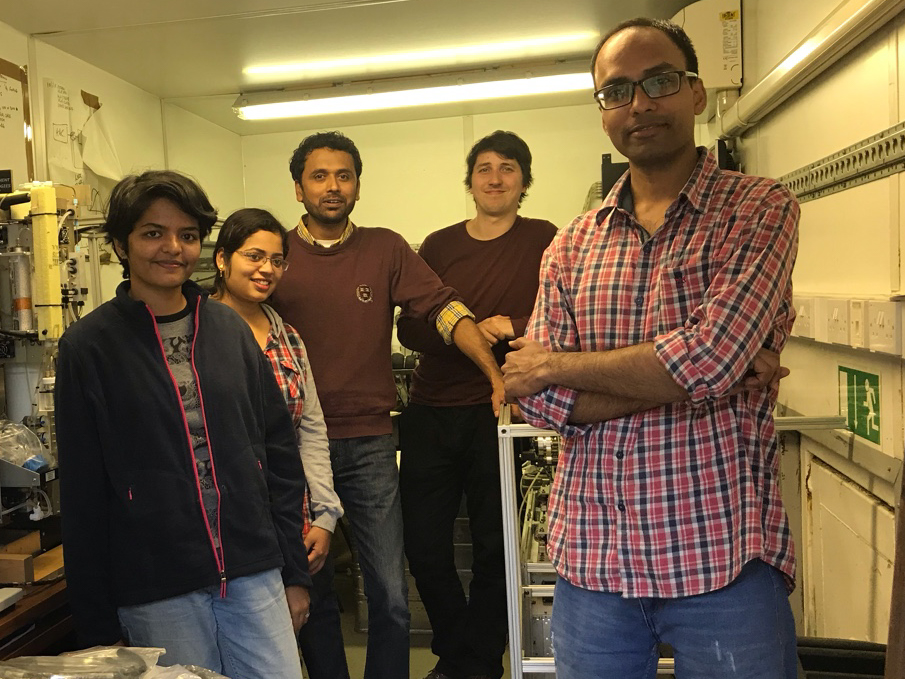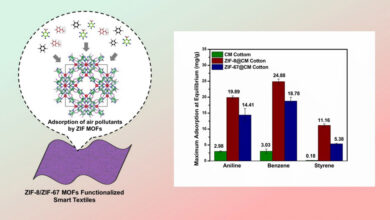Researchers find reason behind dense fog and haze in Delhi

New Delhi : Visibility reduction due to fog and haze formation causes severe financial losses and it also jeopardises human lives. Researchers from the Indian Institute of Technology Madras (IIT-Madras) have found Chloride to be the highest inorganic fraction in particulate matter, primarily responsible for haze and fog formation in Northern India including the National capital Delhi.
The study explains that complex chemical reactions involving Hydrochloric Acid (HCl), which is directly emitted in the atmosphere from plastic contained waste burning and few industrial processes, is primarily responsible for high PM2.5 chloride level. The HCl from various sources combines with ammonia, which is emitted in great amounts over this region. Thus, the ammonium chloride (NH4Cl) so formed, condenses to aerosol and exponentially increases the water uptake ability of aerosol particles resulting in increased size, eventually leading to dense fog formation. In the absence of the excess chloride, the fog formation otherwise would be suppressed significantly.
The findings were surprising for the researchers and unfolded the mystery of high chloride in PM2.5 and scientifically unravelled its precise role in fog and haze formation over Delhi. Dr. Sachin S. Gunthe, Associate Professor, Department of Civil Engineering, IIT Madras, who supervised and led the study, and his team put before themselves a very basic question “If overall PM2.5 mass burden over Delhi is much lower than polluted megacity Beijing, then why visibility reduction is a major problem in Delhi?”
Elaborating on the findings of this research, DrGunthe said, “We realised that despite absolute PM2.5 mass burden over Delhi being much less than other polluted megacities around the world, including Beijing, the pollution and atmospheric chemistry of Delhi is much more complex to understand. This work put forward the importance of measurements and modelling approaches to scientifically conclude, that half of the water uptake and visibility reduction by aerosol particles around Delhi is caused by the HCl emissions, which is locally emitted in Delhi, potentially due to plastic contained waste burning and other industrial processes.”
The group of scientists and students deployed state-of-the-art instruments to measure the chemical composition and other important properties of PM2.5, along with relative humidity and temperature in Delhi, which were operated round the clock for one month with extreme care and dedicated expertise. The observations were then used in complex chemical models.
Elaborating on this research, Prof R. Ravikrishna, Department of Chemical Engineering, IIT Madras, who was also part of the team that conducted this study, said, “With the results from first couple of days, it was very clear to us that Delhi is different; because generally for a polluted urban region like Delhi, one would expect sulfate to be a highest inorganic fraction of particulate matter; however, we found chloride to be the highest inorganic fraction of particulate matter.”
Speaking about the findings, Dr Gunthe said, “Scientifically, our job is half done. Plastic-contained waste burning can emit highly toxic chemicals called ‘dioxins’, which can accumulate in the food chain causing severe problems with reproduction and the immune system. We further need to investigate in this direction. Enhancement in the fundamental science of air pollution should be given importance as much as technology development to tackle pollution.”
The study has been published in the International journal ‘Nature Geoscience’. The study, led by IIT Madras, was carried out in collaboration with Max Planck Institute for Chemistry, Germany; Harvard University, United States of America (USA); Georgia Institute of Technology, USA; and Manchester University, United Kingdom. (India Science Wire)



